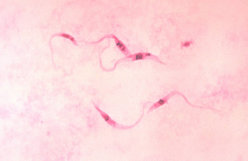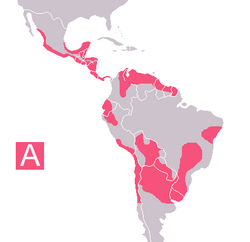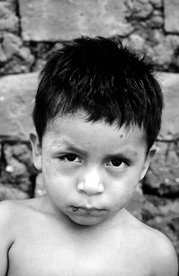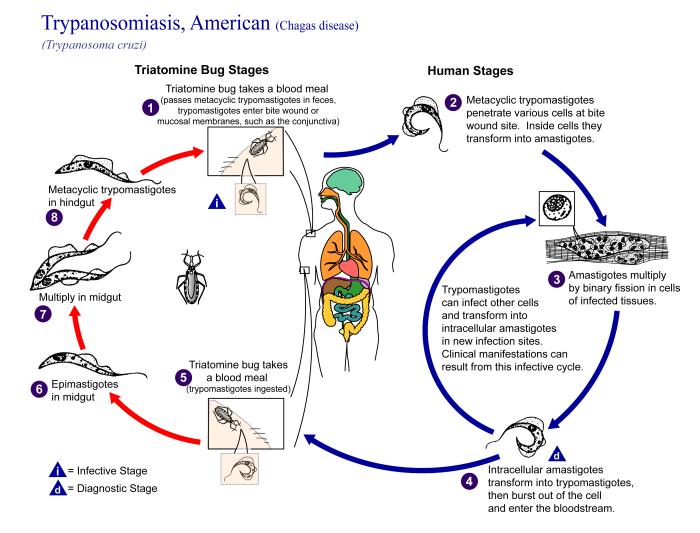Kay Kobbe's third-grade students at Chatsworth Avenue School in Larchmont, N.Y., could not believe what they had seen. Kobbe had shown them a tape of an episode of the CBS-TV news program 60 Minutes, brought to school by classmate Sam Gruppo. The episode was about the 500,000 Africans who are suffering from human African trypanosomiasis, or sleeping sickness. The disease is 100 percent fatal if left untreated but 100 percent curable with the right drug treatment. According to Micheleen Richer, a U.S. doctor interviewed for the program, most people suffering from the disease could not get access to the drug.
When the students learned that so many people were suffering and dying unnecessarily, they took action. They formed the organization Kids for World Health (KFWH) to raise funds to purchase the drug and spread awareness of sleeping sickness and other neglected diseases.
Five years later, the organization has raised $30,000 and has chapters in a dozen U.S. schools. In an emotional ceremony held in Larchmont in March, the 15 original members of KFWH, all of them in seventh grade, presented a check to visiting scientists and doctors from the international medical community. "It's wonderful to hear a message of hope when you usually hear a message of despair," said one of the scientists, Chris Schofield, of the London School of Hygiene and Tropical Diseases.
TOXIC: TREATMENT
African trypanosomiasis is called sleeping sickness because one of its main symptoms is drowsiness. The disease is caused by a protozoan called Trypanosoma brucei. A protozoan is a one-celled organism that belongs to the protist kingdom. T. brucei attacks the human central nervous system--the brain and the spinal cord. (See "Tsetse Transmitter".)
For many years, the standard treatment for sleeping sickness was melarsoprol, a 50-year-old drug that contains antifreeze and arsenic. However, melarsoprol is highly caustic; it causes extreme pain and kills one in 20 patients. Understandably, many people refuse to take it.
Watching the 60 Minutes program, Kobbe's students learned that a cure for sleeping sickness was found years ago. In 1975, the drug company Merrell Dow synthesized a compound called eflornithine. The compound excited the medical community because it killed cells without causing poisonous side effects. Many researchers hoped that it would prove to be a safe treatment for cancer, the uncontrolled growth of cells in the body. Alas, it did not.
However, in 1980, an American parasite biologist named Cy Bacchi found that eflornithine destroyed T. brucei and was an effective, nontoxic cure for sleeping sickness. Its only side effects were some hair loss and mild anemia (a deficiency in red blood cells). Merrell Dow donated small amounts of eflornithine to clinics in Africa, and the compound's effectiveness proved to be so remarkable that it was dubbed the "resurrection drug." It lifted patients off their deathbeds.
Eflornithine was never developed and marketed as a drug, however. No profit could be made from something that would be valuable only to people who couldn't afford it. Eflornithine cost more to make than many victims of sleeping sickness earned in a lifetime.
Between 1975 and 1999, of the 1,393 new drugs approved for human use around the world, only 1 percent were for tropical diseases, according to the humanitarian organization Doctors Without Borders. Every year, millions of people contract such diseases, but most of the victims are too poor to afford modern medicines.
LIFESTYLE DRUG
Today, pharmaceutical companies invest millions of dollars in "lifestyle" drugs that erase cosmetic flaws and signs of aging. In 2000, the Gillette and Bristol-Myers Squibb companies took note of one side effect of eflornithine and restarted production of the compound as a treatment for unwanted facial hair in women. When the World Health Organization (WHO) and Doctors Without Borders learned about that, they persuaded Bristol-Myers and several other companies to donate eflornithine to tens of thousands of sleeping sickness patients in Africa.
At about the same time, Kids for World Health was kicking into gear. "I was appalled that people were dying without medicine," says Emily Wharton, one of the students in Kobbe's class. "We saw pictures of people like us with the disease."
The kids wrote to drug companies. They visited Sen. Hillary Clinton in Washington, D.C. They held bake sales and car washes and sold bracelets. They gave fund-raising talks in churches and temples.
The money they continue to raise is spent on diagnosis and treatment of sleeping sickness; some of it is also earmarked for books that teach African children about the disease. Finally, some of the money goes to the construction of the Kids for World Health pediatric wing and an attached school at a clinic in Tambura County, Sudan, run by Richer.
HEALTH EXPO
More than 500 people attended the first KFWH health fair last March. Among the attendees was Jean Janin, chief medical officer for the elimination of sleeping sickness at the WHO. "I remember when you first contacted me," he said, addressing the 15 founding members of KFWH. "You were very small; now you are big."
Janin continued, "Of course, we need money, but what we need more importantly is awareness. These young people have said it is not acceptable that children are dying of curable diseases. You are the future. Maybe one day some of you can take my seat."
Multiple Choice
Choose the response that best completes the statement or answers the question. Write the letter of the response in the blank provided.
-- 1. Sleeping sickness is caused by a (A) virus. (B) protozoan. (C) bacterium.
-- 2. An organism that transmits a disease-causing agent from one animal to another is called a (A) carrier. (B) transmitter. (C) vector.
-- 3. The medical term for sleeping sickness is (A) trypanosomiasis. (B) melarsoprol. (C) eflornithine.
-- 4. The fly that transmits the disease-causing agent for sleeping sickness is the (A) fruit fly. (B) housefly. (C) tsetse fly.
-- 5. Anemia is a deficiency in (A) calcium. (B) vitamin D. (C) red blood cells.
-- 6. The central nervous system includes the (A) brain. (B) spinal cord. (C) both A and B.
-- 7. The number of people in Africa who have sleeping sickness is (A) 5,000. (B) 50,000. (C) 500,000.
-- 8. Encephalitis is an inflammation of the (A) stomach. (B) brain. (C) salivary glands.
-- 9. One of the main symptoms of sleeping sickness is (A) drowsiness. (B) insomnia. (C) blindness.
-- 10. The uncontrolled growth of cells in the body leads to the disease (A) osteoporosis. (B) cancer. (C) rickets.
Answer
1. B, 2. C, 3. A, 4. C, 5. C, 6. C, 7. C, 8. B, 9. A, 10. B
TSETSE TRANSMITTER
Sleeping sickness is caused by the protozoan Trypanosoma brucei, But the tsetse fly is the vector for sleeping sickness. A vector is an organism, often an insect, that transmits a disease-causing agent from one animal to another.
When a tsetse fly bites a cow infected by T. brucei, it ingests some of the protozoa along with the blood meal. The protozoa multiply over a period of weeks within the fly's gut and then travel to the salivary glands of the fly.
When the same fly bites a human, it injects the protozoa into the person's bloodstream, infecting the person. The protozoa multiply in the blood and the lymphatic system, causing symptoms such as drowsiness, fever, rash, and wasting. Eventually the protozoa reach the brain and the spinal cord. Encephalitis (inflammation of the brain), coma, and death result.
The injectable drug eflornithine kills T. brucei and cures sleeping sickness. The cost of one two-week treatment with eflornithine is about $70.
COPYRIGHT 2005 Weekly Reader Corp.
COPYRIGHT 2005 Gale Group




